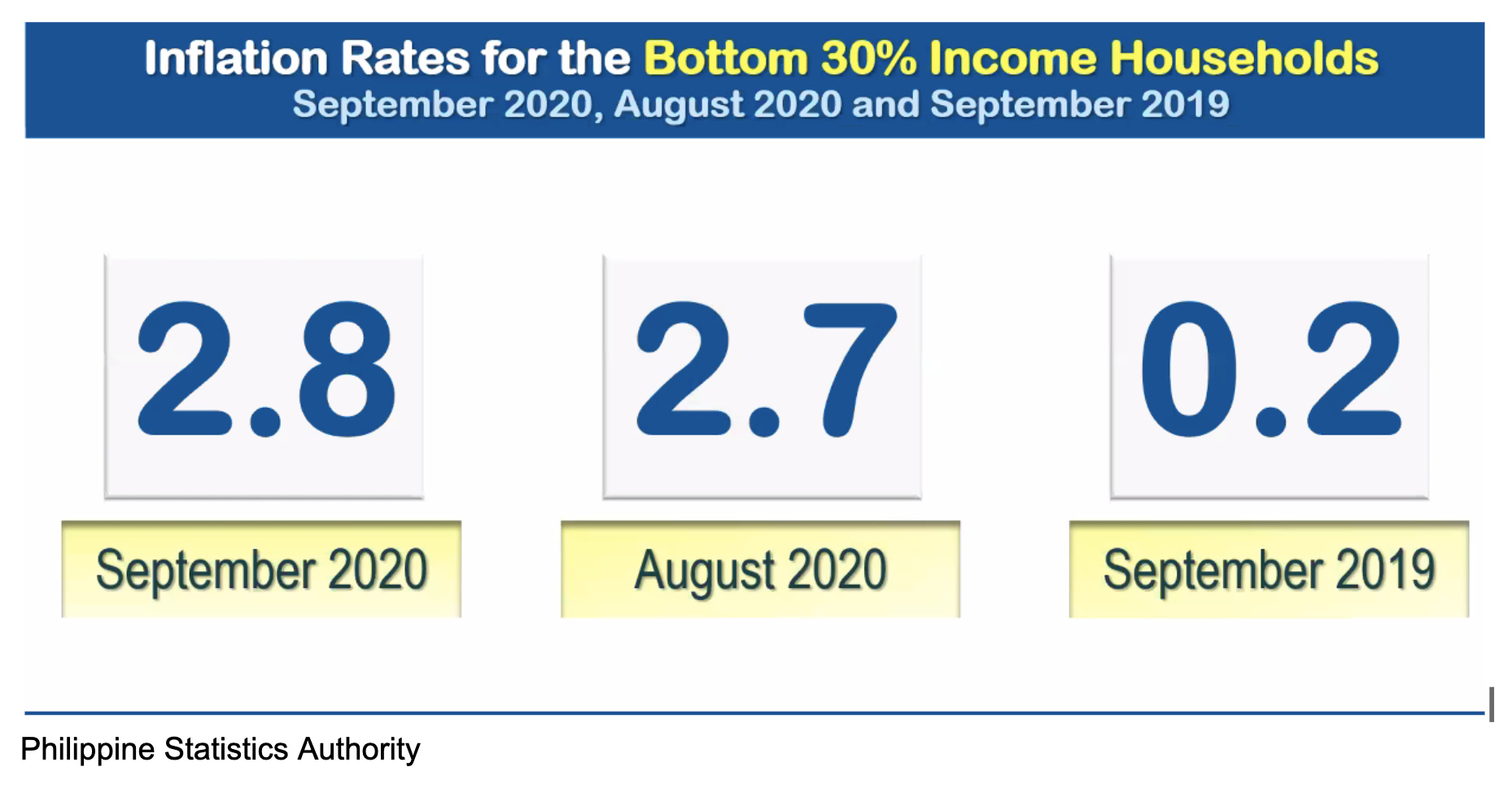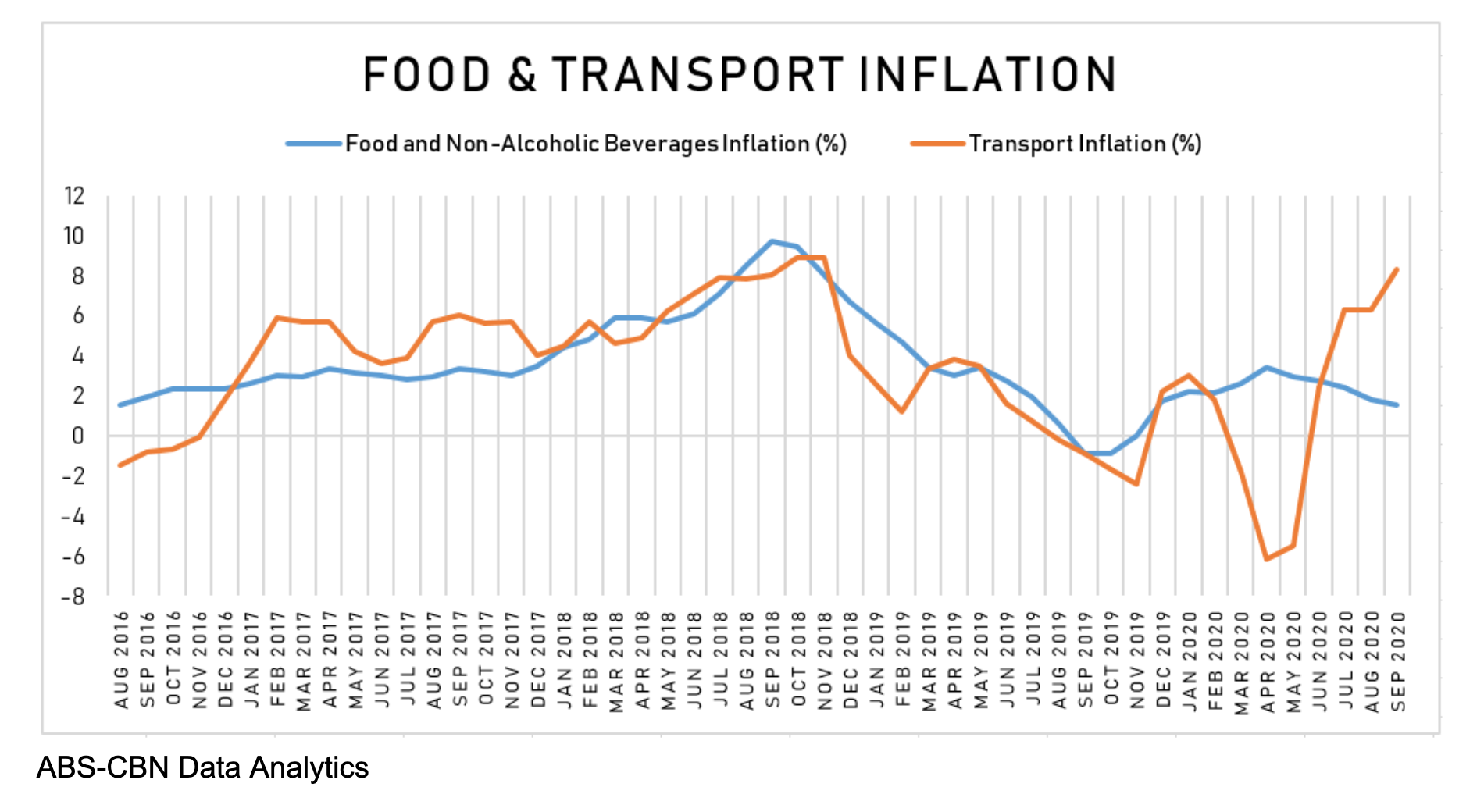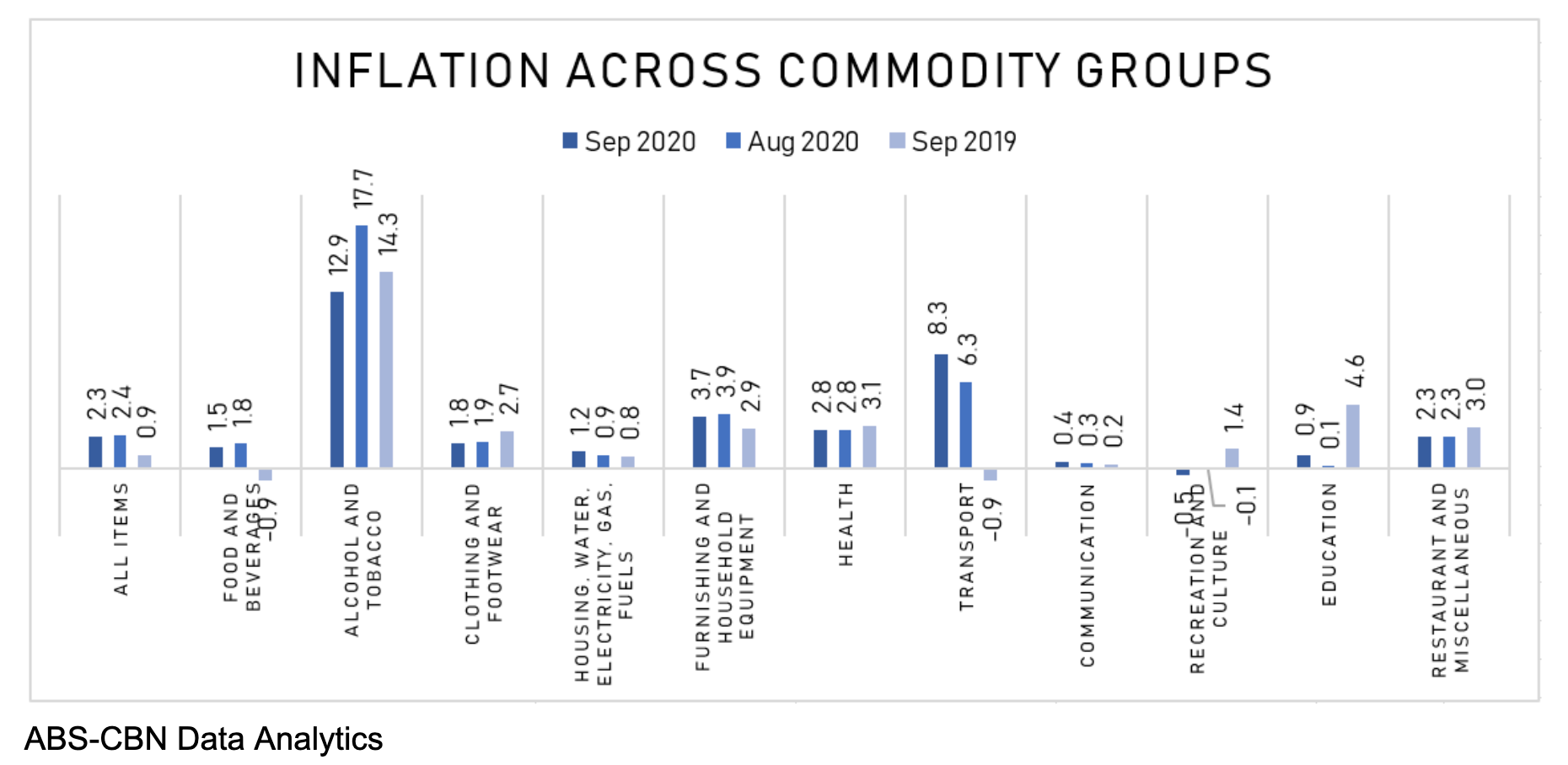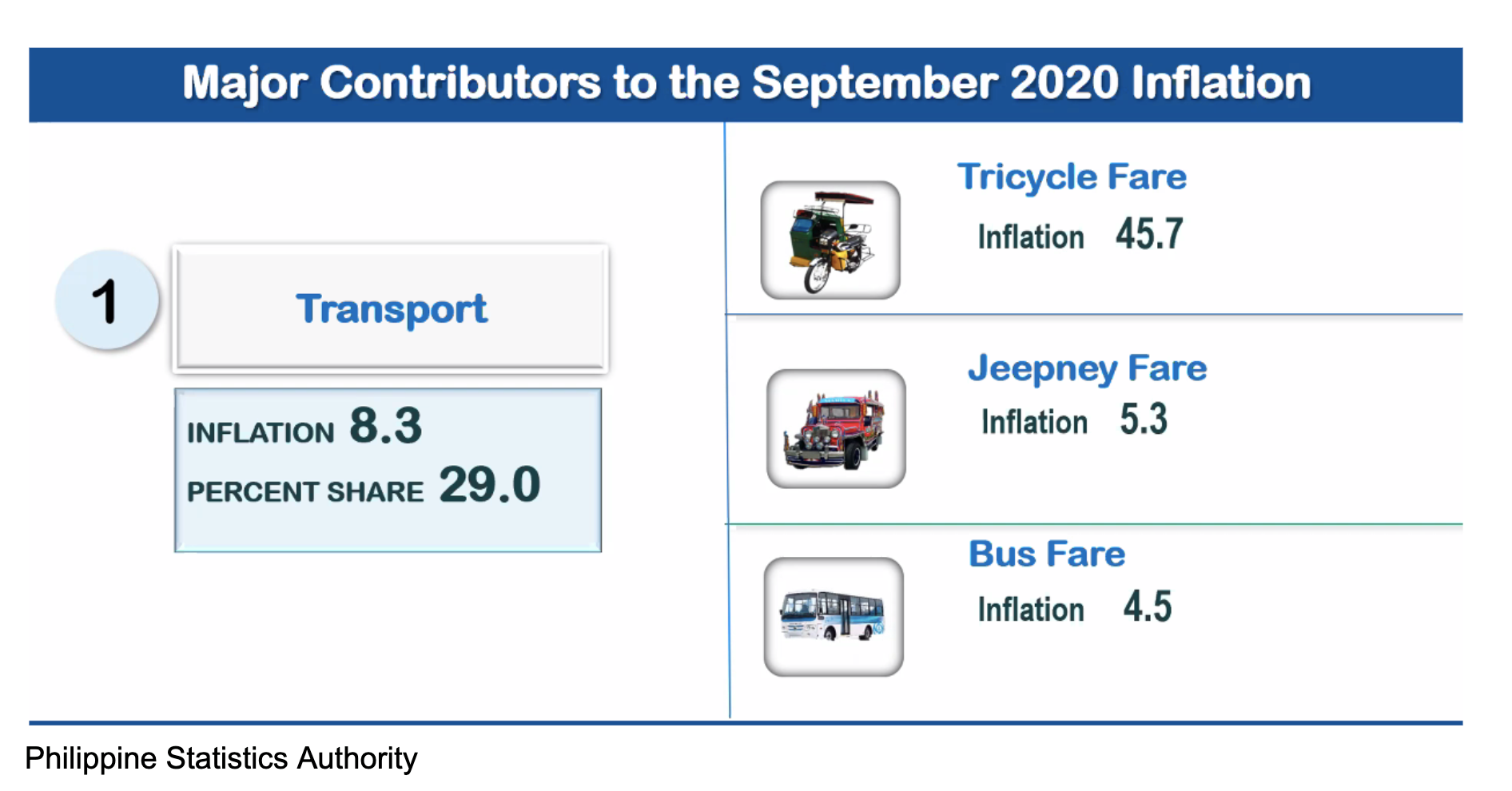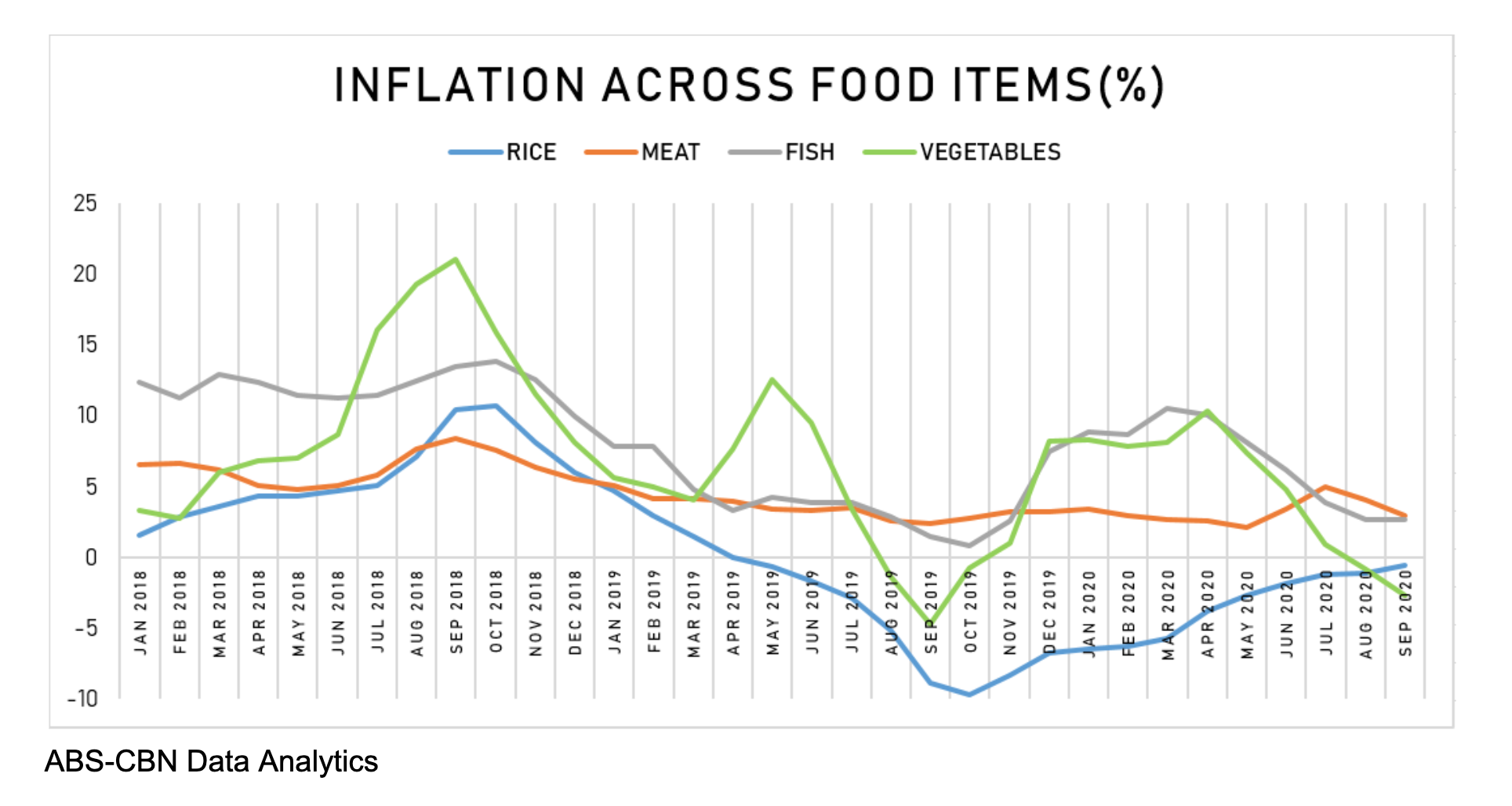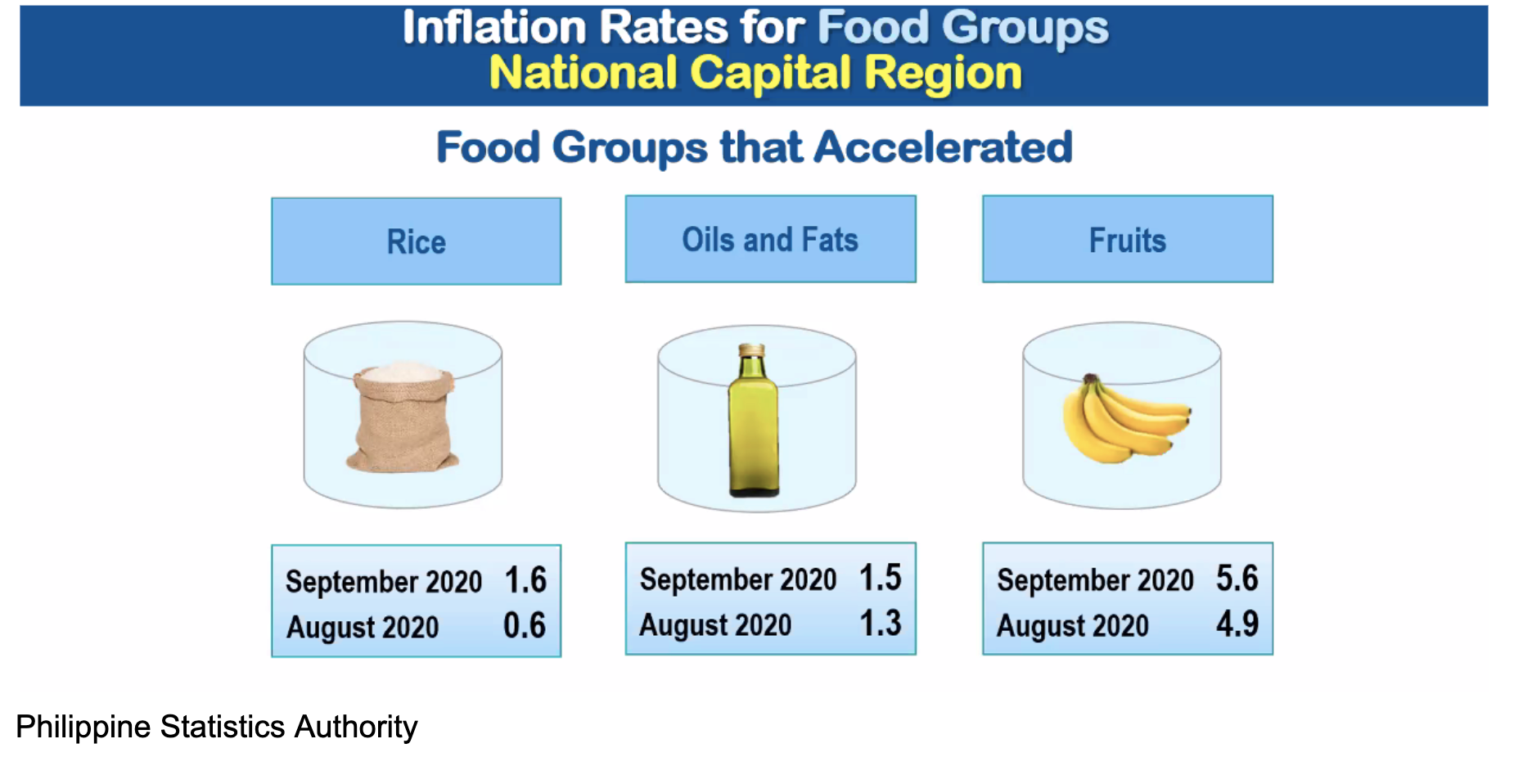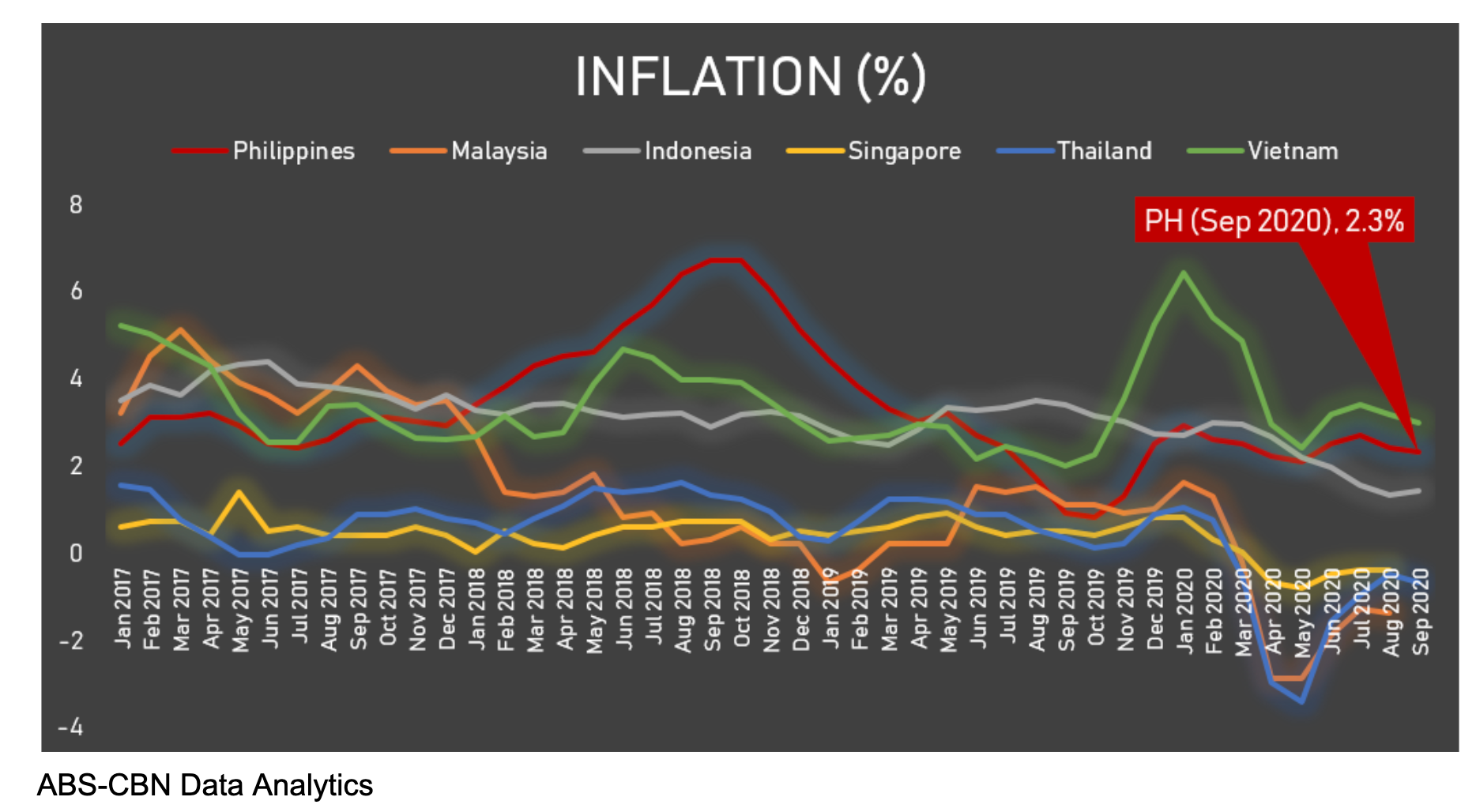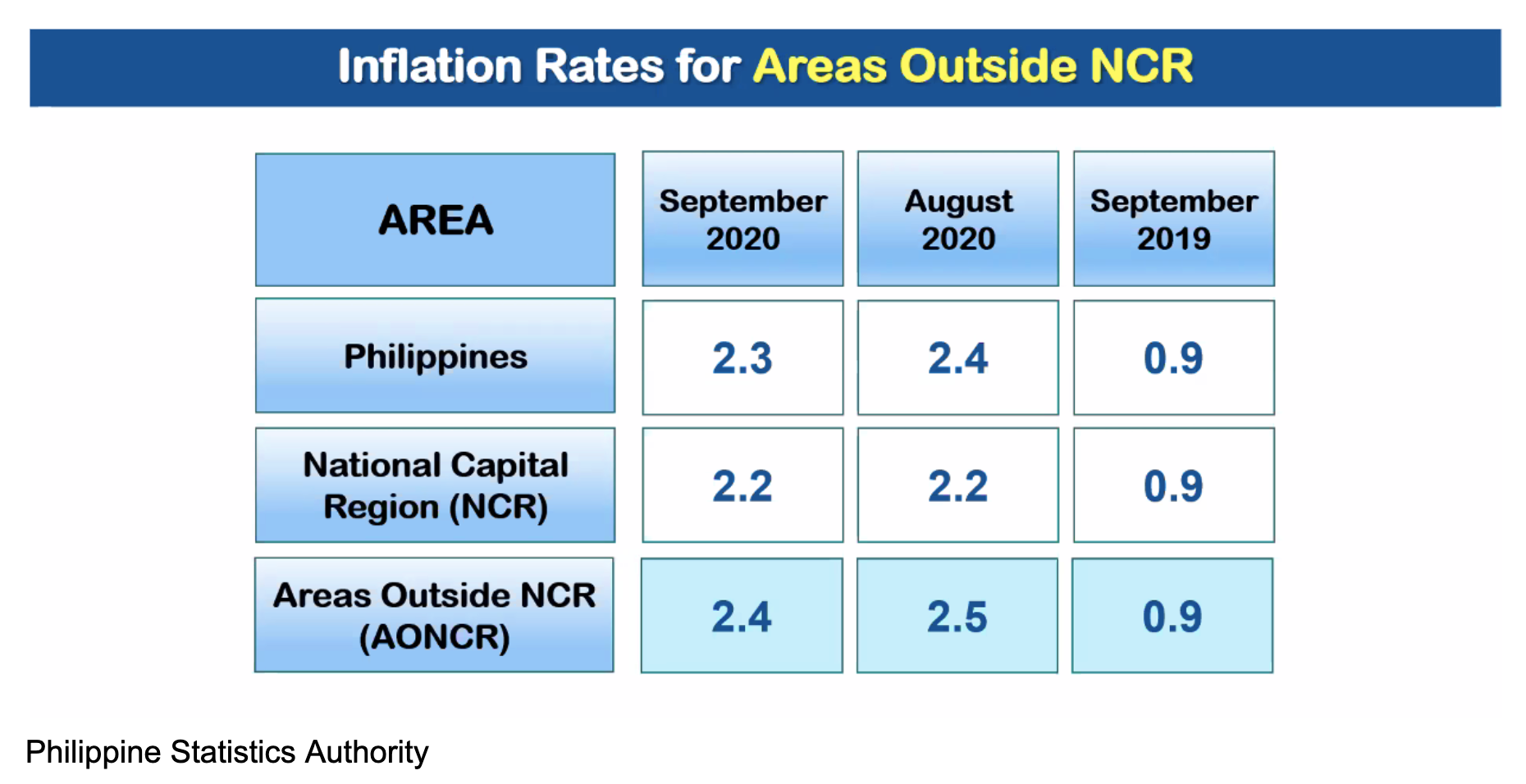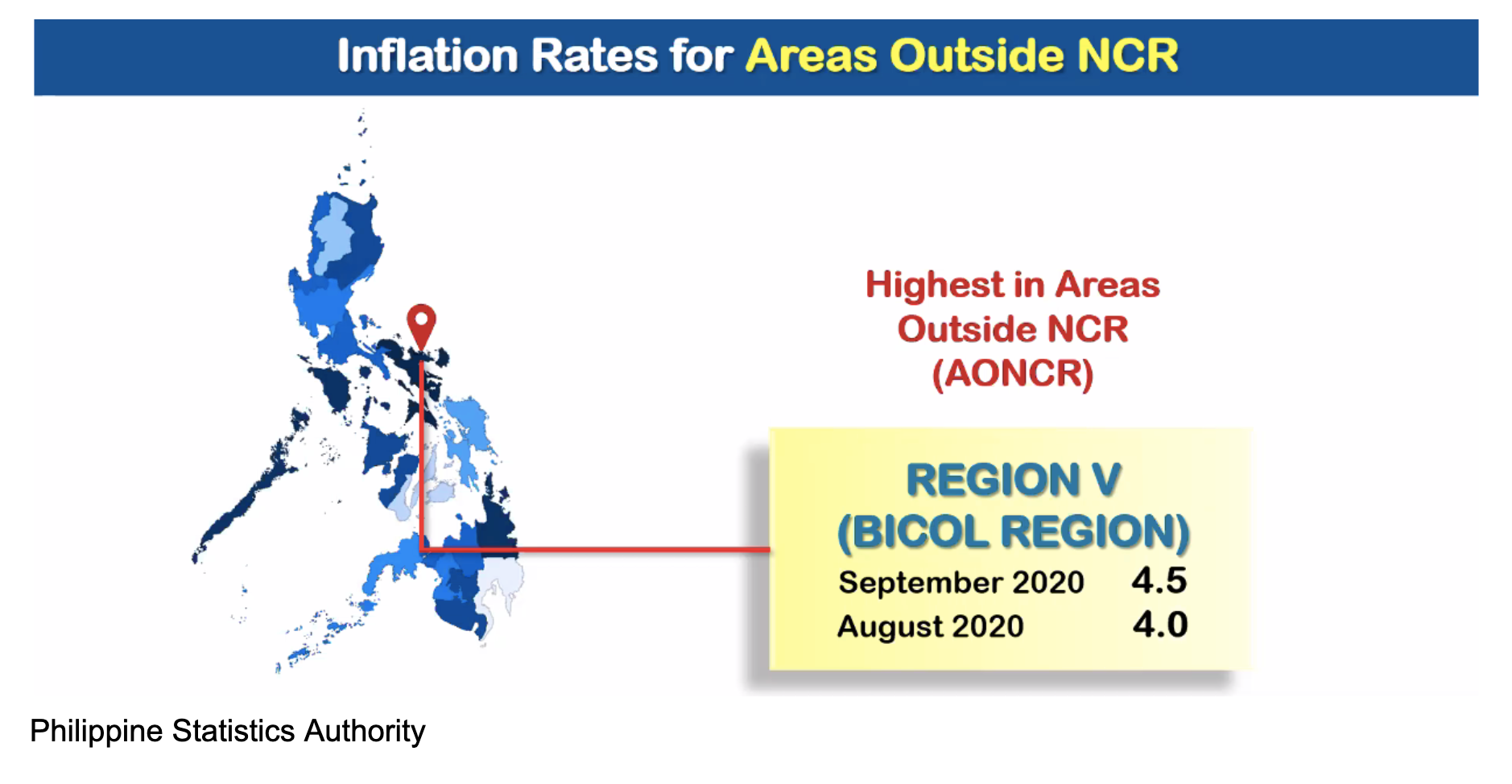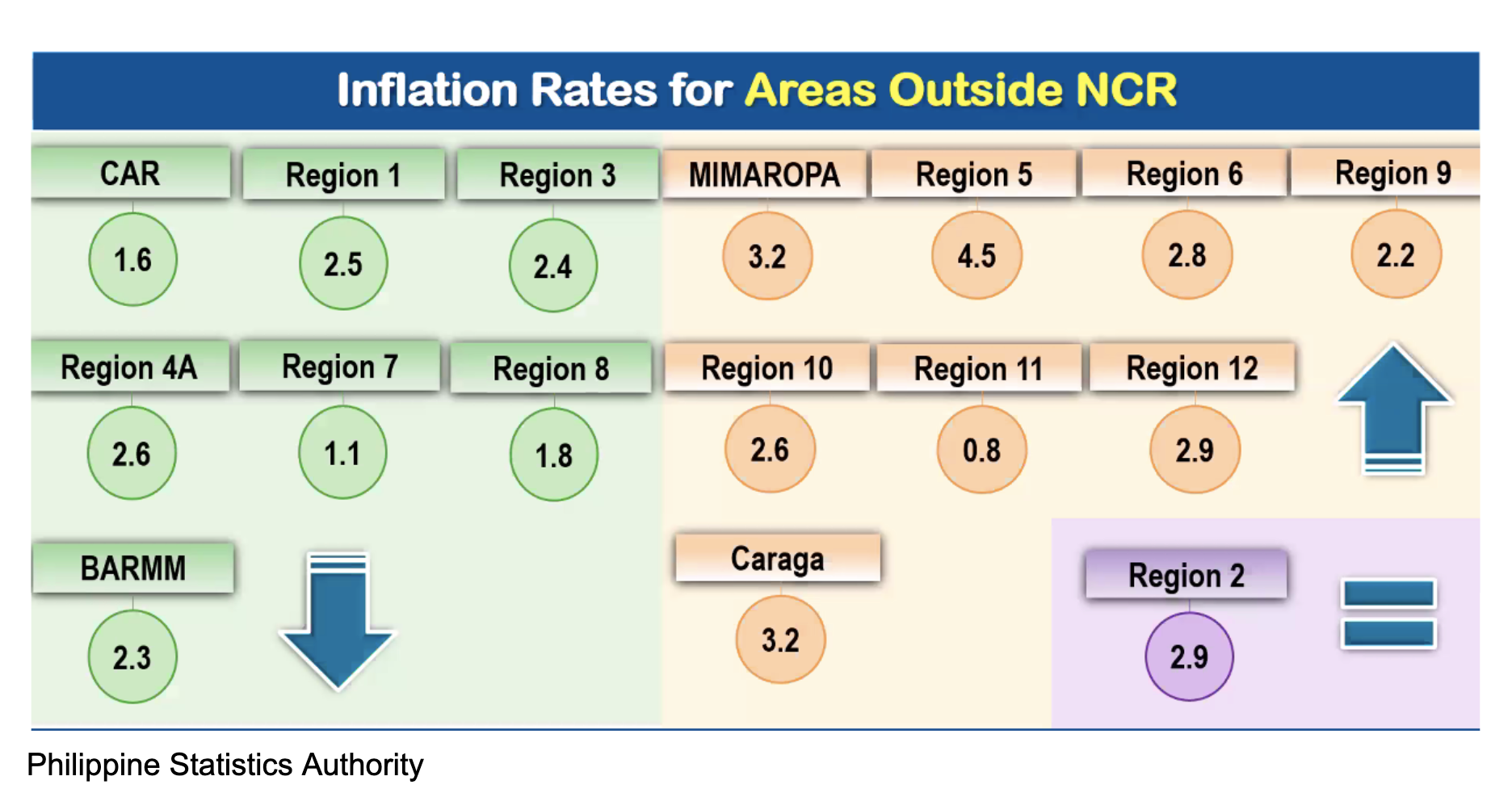Dissecting Data: Inflation for the poor likely to get worse due to rising transport costs | ABS-CBN
ADVERTISEMENT

Welcome, Kapamilya! We use cookies to improve your browsing experience. Continuing to use this site means you agree to our use of cookies. Tell me more!
Dissecting Data: Inflation for the poor likely to get worse due to rising transport costs
Dissecting Data: Inflation for the poor likely to get worse due to rising transport costs
Warren de Guzman and Edson Guido,
ABS-CBN News
Published Oct 06, 2020 02:40 PM PHT
|
Updated Oct 06, 2020 02:43 PM PHT
MANILA - Philippine inflation slowed to 2.3 percent in September, from 2.4 percent in August. The September rate was faster compared to the same month last year as September 2019 inflation was just at 0.9 percent. That dip in inflation last year was thanks to extraordinary measures by the government to reverse a near-decade high in inflation hit in 2018.
MANILA - Philippine inflation slowed to 2.3 percent in September, from 2.4 percent in August. The September rate was faster compared to the same month last year as September 2019 inflation was just at 0.9 percent. That dip in inflation last year was thanks to extraordinary measures by the government to reverse a near-decade high in inflation hit in 2018.
The bad news is inflation for the bottom 30 percent income households, the poor, hit 2.8 percent. This is faster than the 2.7 percent rate hit in August. Overall inflation for the poor has been higher than the national average since April.
The bad news is inflation for the bottom 30 percent income households, the poor, hit 2.8 percent. This is faster than the 2.7 percent rate hit in August. Overall inflation for the poor has been higher than the national average since April.
National Statistician, Undersecretary Dennis Mapa, says the reason for this trend has varied throughout the course of the pandemic. At first, it was caused by higher food inflation, which is the number one weighted item in the inflation basket for the poor. Now however, it has reversed, with transportation inflation becoming the number one cause of pain for poor families.
National Statistician, Undersecretary Dennis Mapa, says the reason for this trend has varied throughout the course of the pandemic. At first, it was caused by higher food inflation, which is the number one weighted item in the inflation basket for the poor. Now however, it has reversed, with transportation inflation becoming the number one cause of pain for poor families.
Mapa said “utilities and transport have a high weight in the inflation index for the bottom 30 percent income households, and this past month inflation for both were high. If these two, which account for about 20 percent of the weight, will increase further, then any reduction or stability in food inflation will be outweighed, and maybe we will be seeing a slight increase in the inflation for the bottom 30 percent.
Mapa said “utilities and transport have a high weight in the inflation index for the bottom 30 percent income households, and this past month inflation for both were high. If these two, which account for about 20 percent of the weight, will increase further, then any reduction or stability in food inflation will be outweighed, and maybe we will be seeing a slight increase in the inflation for the bottom 30 percent.
ADVERTISEMENT
This chart comparing food and transport inflation shows us how food inflation kept inflation for the poor high earlier in the year, before transport inflation took over.
This chart comparing food and transport inflation shows us how food inflation kept inflation for the poor high earlier in the year, before transport inflation took over.
Transport inflation, shown in orange, turned negative in March and stayed there until May as a function of the community quarantines put in place to deal with COVID-19. Food prices, shown in blue, stayed positive and a bit elevated early on, as logistics issues created some problems with supply. Transport inflation however overtook food inflation in July, as public transport opened up gradually in step with easing quarantine conditions.
Transport inflation, shown in orange, turned negative in March and stayed there until May as a function of the community quarantines put in place to deal with COVID-19. Food prices, shown in blue, stayed positive and a bit elevated early on, as logistics issues created some problems with supply. Transport inflation however overtook food inflation in July, as public transport opened up gradually in step with easing quarantine conditions.
Transport inflation hit 8.3 percent in September. That is its highest level since November 2018, when fuel price hikes were causing headaches for commuters.
Transport inflation hit 8.3 percent in September. That is its highest level since November 2018, when fuel price hikes were causing headaches for commuters.
Mapa said “our projection here is that the transport index would still increase, because of the base effect, particularly tricycle (fares). I understand because of the social distancing, the overall cost increases. Data from regional centers show the same. In provinces outside NCR, tricycle fare has doubled. We are seeing an increase in the transport index for the last 3 months of the year, October, November and December.”
Mapa said “our projection here is that the transport index would still increase, because of the base effect, particularly tricycle (fares). I understand because of the social distancing, the overall cost increases. Data from regional centers show the same. In provinces outside NCR, tricycle fare has doubled. We are seeing an increase in the transport index for the last 3 months of the year, October, November and December.”
Philippine Statistics Authority data show Tricycle inflation was at 45.7 percent in September. Jeepney fare inflation was at 5.3%. Bus fare inflation was at 4.5 percent.
Philippine Statistics Authority data show Tricycle inflation was at 45.7 percent in September. Jeepney fare inflation was at 5.3%. Bus fare inflation was at 4.5 percent.
ADVERTISEMENT
A sustained slowdown, or at least further stability in food inflation, will be crucial to offset transport inflation and keep overall inflation in check. The trend for food inflation has been promising. Rice and vegetables have remained in deflation, which means prices of these goods actually decreased. Rice inflation has been negative since May 2019. That is 17 straight months of rice deflation.
A sustained slowdown, or at least further stability in food inflation, will be crucial to offset transport inflation and keep overall inflation in check. The trend for food inflation has been promising. Rice and vegetables have remained in deflation, which means prices of these goods actually decreased. Rice inflation has been negative since May 2019. That is 17 straight months of rice deflation.
However rice inflation in the National Capital Region actually hit 1.6 percent in September, from a positive 0.6 percent in August. This means that while the rest of the country has been enjoying falling rice prices, the capital has been dealing with price increases for rice.
However rice inflation in the National Capital Region actually hit 1.6 percent in September, from a positive 0.6 percent in August. This means that while the rest of the country has been enjoying falling rice prices, the capital has been dealing with price increases for rice.
The September inflation rate of 2.3 percent was a 4 month low for the Philippines. However Philippine inflation remains elevated compared to major ASEAN economies. The Philippines is shown in red in this chart. Only Vietnam shown in green is higher. Indonesia, Singapore, Thailand, and Malaysia are all lower.
The September inflation rate of 2.3 percent was a 4 month low for the Philippines. However Philippine inflation remains elevated compared to major ASEAN economies. The Philippines is shown in red in this chart. Only Vietnam shown in green is higher. Indonesia, Singapore, Thailand, and Malaysia are all lower.
Despite the higher rice inflation, the National Capital Region still had a lower inflation rate compared to the rest of the Philippines. It averaged 2.2 percent in September, the same level as August. Areas outside NCR had an inflation rate of 2.4 percent, higher than the national average of 2.3 percent.
Despite the higher rice inflation, the National Capital Region still had a lower inflation rate compared to the rest of the Philippines. It averaged 2.2 percent in September, the same level as August. Areas outside NCR had an inflation rate of 2.4 percent, higher than the national average of 2.3 percent.
The Bicol Region had the highest inflation rate outside of the National Capital Region, at 4.5 percent. This was also higher compared to its inflation in August.
The Bicol Region had the highest inflation rate outside of the National Capital Region, at 4.5 percent. This was also higher compared to its inflation in August.
ADVERTISEMENT
The Davao Region meanwhile had the lowest inflation rate outside NCR, at 0.8 percent. This was also higher compared to its inflation in August.
The Davao Region meanwhile had the lowest inflation rate outside NCR, at 0.8 percent. This was also higher compared to its inflation in August.
Seven regions outside NCR saw their inflation rates go down month-on-month, while eight regions saw their inflation rates accelerate. One region, region 2, saw its inflation rate remain steady, similar to what happened in NCR.
Seven regions outside NCR saw their inflation rates go down month-on-month, while eight regions saw their inflation rates accelerate. One region, region 2, saw its inflation rate remain steady, similar to what happened in NCR.
The Philippine Central Bank, the gatekeeper of inflation in the Philippines, forecast September inflation at between 1.8 and 2.6 percent.
The Philippine Central Bank, the gatekeeper of inflation in the Philippines, forecast September inflation at between 1.8 and 2.6 percent.
Central Bank Governor Benjamin Diokno said the September inflation rate “is consistent with BSP’s assessment that inflation is expected to remain benign over the policy horizon with the balance of risks tilting toward the downside due largely to the impact on domestic and global economic activity of possible deeper economic disruptions caused by the coronavirus pandemic.”
Central Bank Governor Benjamin Diokno said the September inflation rate “is consistent with BSP’s assessment that inflation is expected to remain benign over the policy horizon with the balance of risks tilting toward the downside due largely to the impact on domestic and global economic activity of possible deeper economic disruptions caused by the coronavirus pandemic.”
Despite the negative impact on the economy from the pandemic, the Central Bank remains confident in a steady recovery. Diokno said “the significant monetary easing and liquidity enhancing measures done by the BSP and the timely implementation of fiscal measures in the Bayanihan 2 Act are seen to provide sufficient support to economic recovery in the coming months. Signs of gradual improvements in manufacturing and external demand as lockdown protocols are further relaxed here and abroad are also expected to boost sentiments going forward. “
Despite the negative impact on the economy from the pandemic, the Central Bank remains confident in a steady recovery. Diokno said “the significant monetary easing and liquidity enhancing measures done by the BSP and the timely implementation of fiscal measures in the Bayanihan 2 Act are seen to provide sufficient support to economic recovery in the coming months. Signs of gradual improvements in manufacturing and external demand as lockdown protocols are further relaxed here and abroad are also expected to boost sentiments going forward. “
ADVERTISEMENT
If economic activity increases, demand for goods and services could also increase, which would lead to an uptick in inflation. Inflation remains manageable for the Philippines, but for the poor, it remains elevated.
If economic activity increases, demand for goods and services could also increase, which would lead to an uptick in inflation. Inflation remains manageable for the Philippines, but for the poor, it remains elevated.
Read More:
ANC
ANC Top
inflation
CPI
consumer price index
Philippine September inflation
BSP
PSa
Dissecting Data
ADVERTISEMENT
ADVERTISEMENT




